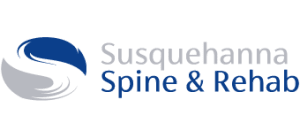From the Surgeon General of the United States:
Dear Colleague,
I am asking for your help to solve an urgent health crisis facing America: the opioid epidemic. Everywhere I travel, I see communities devastated by opioid overdoses. I meet families too ashamed to seek treatment for addiction. And I will never forget my own patient whose opioid use disorder began with a course of morphine after a routine procedure. It is important to recognize that we arrived at this place on a path paved with good intentions. Nearly two decades ago, we were encouraged to be more aggressive about treating pain, often without enough training and support to do so safely. This coincided with heavy marketing of opioids to doctors. Many of us were even taught – incorrectly – that opioids are not addictive when prescribed for legitimate pain. The results have been devastating. Since 1999, opioid overdose deaths have quadrupled and opioid prescriptions have increased markedly – almost enough for every adult in America to have a bottle of pills. Yet the amount of pain reported by Americans has not changed. Now, nearly two million people in America have a prescription opioid use disorder, contributing to increased heroin use and the spread of HIV and hepatitis C. I know solving this problem will not be easy. We often struggle to balance reducing our patients’ pain with increasing their risk of opioid addiction…
Help Stop the Opioid Epidemic
Opioids are medications such as hydrocodone, OxyContin, Percocet, etc… With 54% of patients prescribed opioids are done so for musculoskeletal complaints (muscle pain). The National Safety Council has stated that these drugs are not ideal for dealing with these conditions. What is ideal for treatment? Chiropractors are the highest rated healthcare practitioners for musculoskeletal treatments above physical therapists, specialist physicians (i.e., neurosurgeons, neurologists, orthopedic surgeons), and primary care physicians (family or internal medicine).
Most studies suggest spinal manipulation (the chiropractic adjustment) achieves equal or superior improvement in pain and function when compared with other commonly used interventions. Chiropractic, Acupuncture and Massage are suggested for short, intermediate, and long-term follow-up; still ranking above traditional medical care.
Many people believe chiropractic to be scary; I blame Steven Segal movies. In truth Chiropractic, Massage and Acupuncture have statistically 1/10th of 1% chance of side effects and/or adverse reactions. Sure, it’s a little odd and even freaky. It might seem unnatural and even smarts a little in the beginning; but problems associated with pain killers, both over the counter and Rx number in the upper 6 digits, bordering on 7 a year in the US alone.
Over 80% of Americans suffer from some sort of back pain, add in head, shoulders, knees & toes and it’s over 99%; but only 14% turn to Chiropractic.
